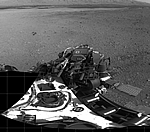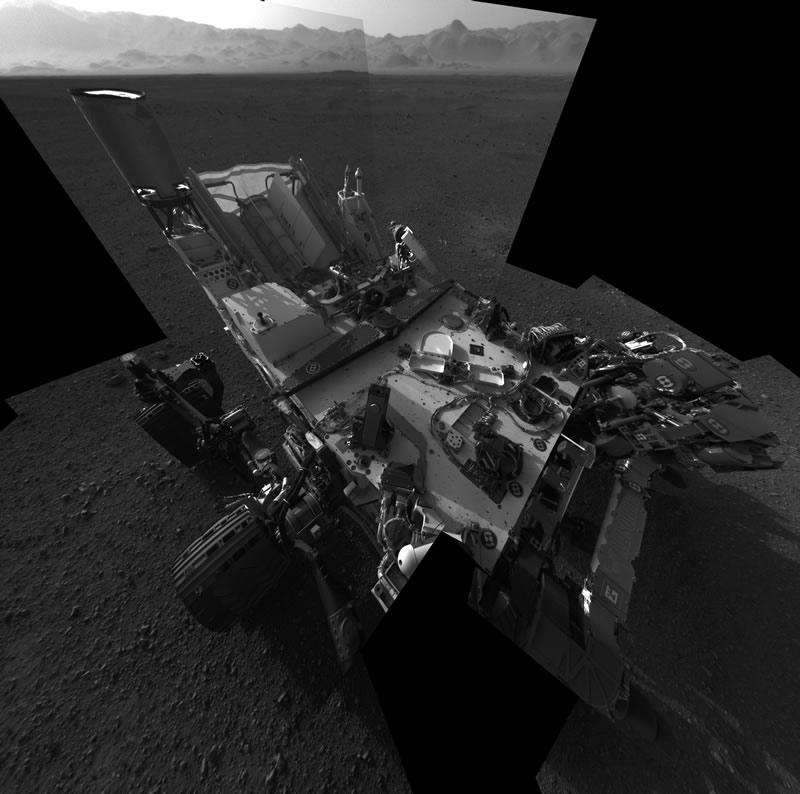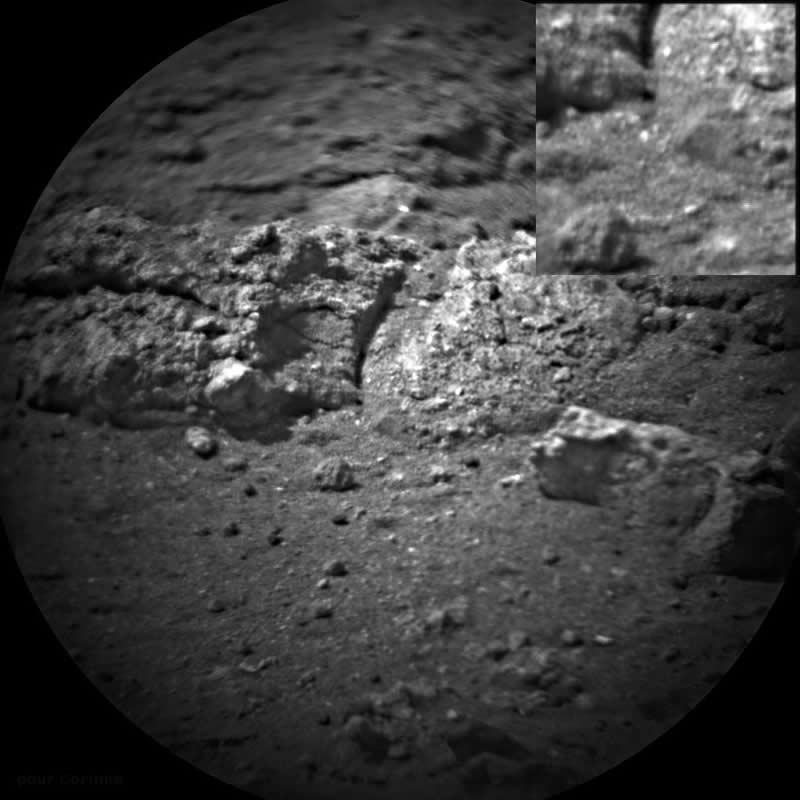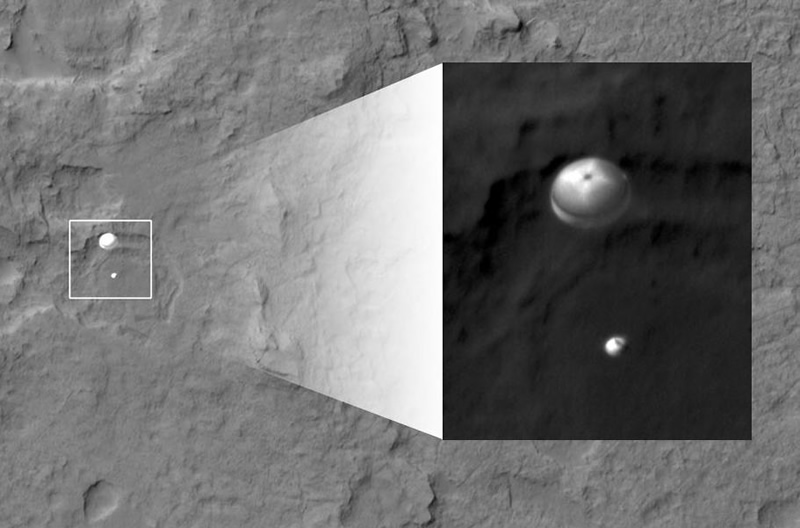 |
|
Curiosity's First Track Marks on Mars
This 360-degree panorama shows evidence of a successful first test drive for NASA's Curiosity rover. On Aug. 22, 2012, the rover made its first move, going forward about 15 feet (4.5 meters), rotating 120 degrees and then reversing about 8 feet (2.5 meters). Curiosity is about 20 feet (6 meters) from its landing site, now named Bradbury Landing.
Visible in the image are the rover's first track marks. A small 3.5-inch (9-centimeter) rock can be seen where the drive began, which engineers say was partially under one of the rear wheels. Scour marks left by the rover's descent stage during landing can be seen to the left and right of the wheel tracks. The lower slopes of Mount Sharp are visible at the top of the picture, near the center.
This mosaic from the rover's Navigation camera is made up of 23 full-resolution frames, displayed in a cylindrical projection.
|
 |
|
Still Life with Rover
This full-resolution self-portrait shows the deck of NASA's Curiosity rover from the rover's Navigation camera. The back of the rover can be seen at the top left of the image, and two of the rover's right side wheels can be seen on the left. The undulating rim of Gale Crater forms the lighter color strip in the background. Bits of gravel, about 0.4 inches (1 centimeter) in size, are visible on the deck of the rover.
This mosaic is made of 20 images, each of 1,024 by 1,024 pixels, taken late at night on Aug. 7 PDT (early morning Aug. 8 EDT). It uses an average of the Navcam positions to synthesize the point of view of a single camera, with a field of view of 120 degrees. Seams between the images have been minimized as much as possible. The wide field of view introduces some distortion at the edges of the mosaic.
|
 |
|
After the Laser Shots
Images taken before and after NASA's Curiosity rover shot its laser 50 times are shown here.
The images were taken by the instrument's remote micro-imager (RMI). They show differences in brightness at the impact spot as well as a slight change in shadows. The inset shows an area about 1 square-inch (2.5 centimeters per side). The target is about 19 feet (5.8 meters) away from the rover.
|
 |
|
Curiosity's Front View, Linearized
This is a version of one of the first images taken by a front Hazard-Avoidance camera on NASA's Curiosity rover, which landed on Mars the evening of Aug. 5 PDT (morning of Aug. 6 EDT). It was taken through a "fisheye" wide-angle lens but has been "linearized" so that the horizon looks flat rather than curved. The image has also been cropped. It is one-quarter of full resolution. As planned, the rover's early engineering images are low resolution.
|
 |
|
Curiosity Spotted on Parachute by Orbiter
NASA's Curiosity rover and its parachute were spotted by NASA's Mars Reconnaissance Orbiter as Curiosity descended to the surface on Aug. 5 PDT (Aug. 6 EDT). The High-Resolution Imaging Science Experiment (HiRISE) camera captured this image of Curiosity while the orbiter was listening to transmissions from the rover. Curiosity and its parachute are in the center of the white box; the inset image is a cutout of the rover stretched to avoid saturation. The rover is descending toward the etched plains just north of the sand dunes that fringe "Mt. Sharp." From the perspective of the orbiter, the parachute and Curiosity are flying at an angle relative to the surface, so the landing site does not appear directly below the rover.
The parachute appears fully inflated and performing perfectly. Details in the parachute, such as the band gap at the edges and the central hole, are clearly seen. The cords connecting the parachute to the back shell cannot be seen, although they were seen in the image of NASA's Phoenix lander descending, perhaps due to the difference in lighting angles. The bright spot on the back shell containing Curiosity might be a specular reflection off of a shiny area. Curiosity was released from the back shell sometime after this image was acquired. |
(credits: JPL - NASA - All rights reserved)